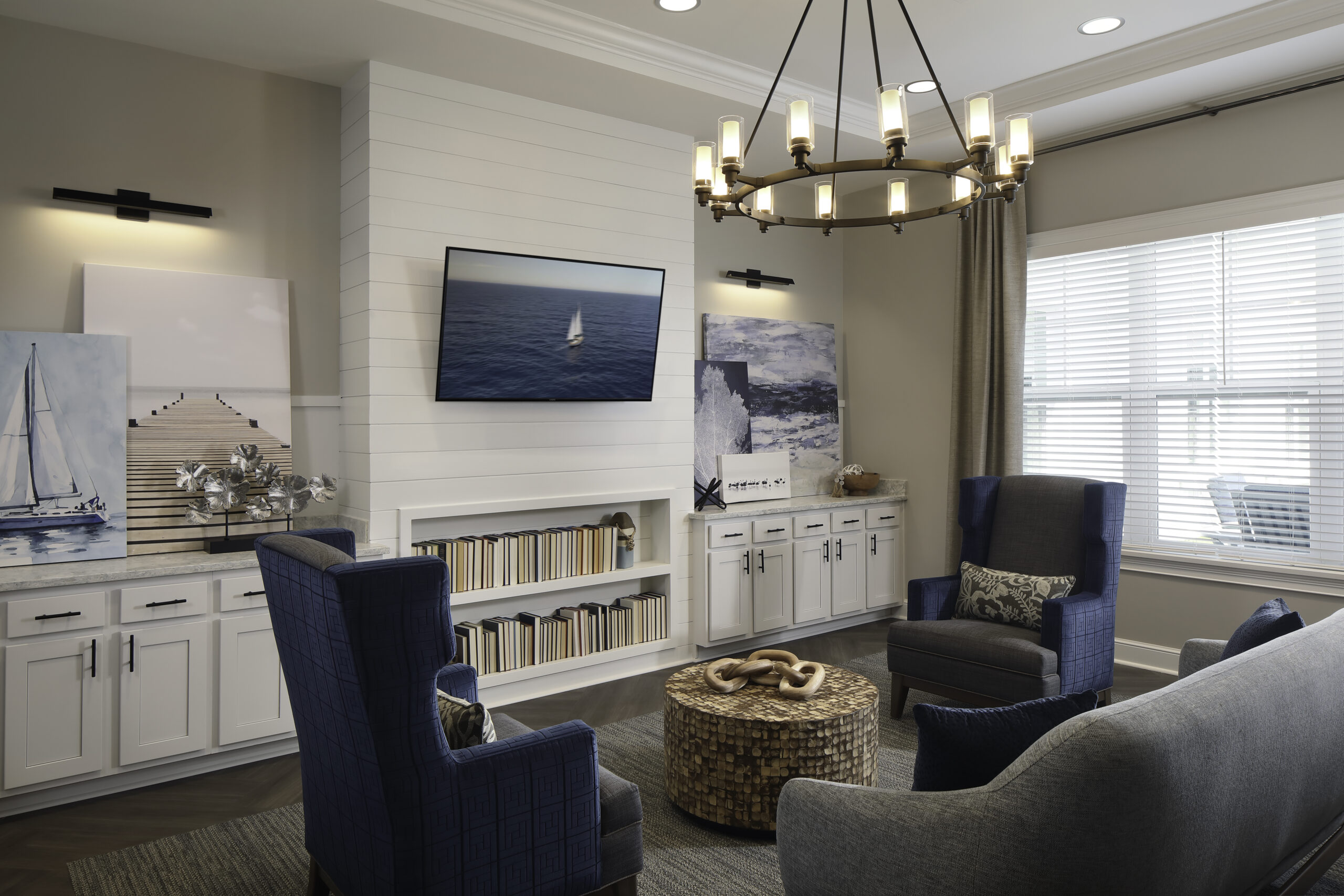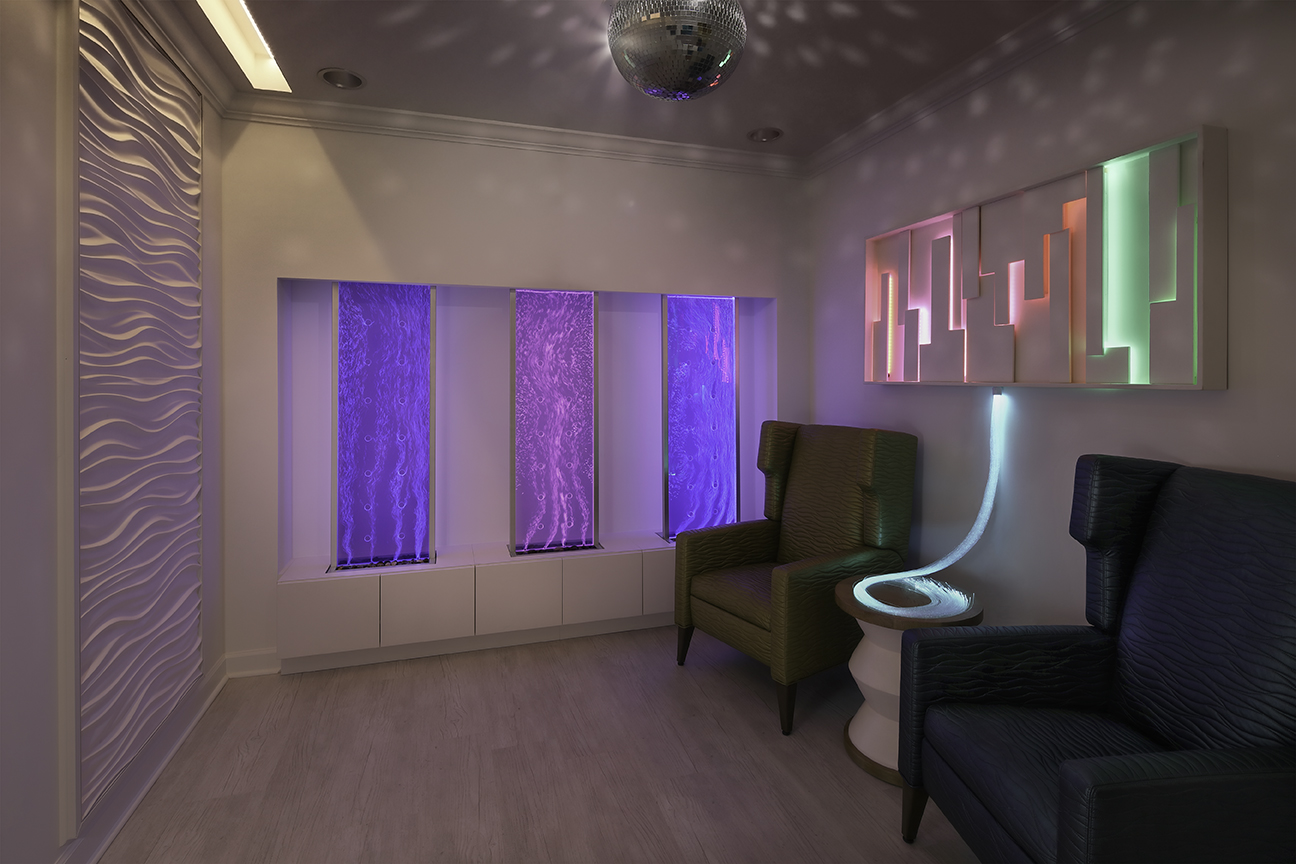Designing a living space for older adults who have been diagnosed with cognitive decline like Alzheimer’s or dementia requires a balance of professional experience and industry knowledge. When seniors who need memory care move into a senior living community, everything in their environment should provide what anyone would wish to feel when at home – safety, comfort, and security.
More goes into creating and furnishing a memory care space than most could imagine. This is why industry experts exist – to strategically sync design and senior living practice. Interior designers that are knowledgeable of the senior living industry think through every item, down to individual artwork or an accessory, to ensure it’s essential.
This includes the furniture that residents will enjoy day in and day out!
It’s important for developers, owners, operators and community administration to lean on industry-specific interior design teams to have the assurance that appropriate furnishings are being chosen.

Key furniture characteristics to consider before deciding on room or single pieces include:
- Activity of the community (functionality)
- Aesthetics (color)
- Cleanability (material)
- Comfort and safety
Activity: Furniture functionality
Memory Care residents usually spend a great deal of time together. These communities are typically rooms with open communal areas that garner socialization and group activity. Mobility issues may vary, but often older adults will require assistance or hold onto furniture to steady themselves. They may also choose a seat based on how easy it is to access or how close it is to the door, depending on how they are feeling.
This makes working with the right interior design firm essential when it comes to choosing the right furniture for your community.
Furniture should be sturdy and secured and not easy to move. Pieces specifically designed for the senior living industry have features like accessible arm rests, lower chairs, sofas and tables which makes it easier to pull up with a wheelchair or maneuver from mobility device to chair.
Movement within the piece itself – say, a swivel chair or glider – may be fun and in theory offer a bigger view or more interesting experience to the user, however, its function may not be accessible to someone with memory impairment depending on the adult’s cognitive and motor abilities. Residents may enjoy recliners but sometimes may need cueing or assistance to operate any levers.

One new type of space 828id creates are sensory rooms (shown in the photo above). Sensory rooms combine gentle light, movement, music and tactile objects designed to either calm or stimulate residents. In these purposeful rooms, residents living with Alzheimer’s disease and dementia can safely explore and stimulate all five senses.
Furniture that allows for everyday social interaction is equally important. Designing seating in groups rather than around the perimeter of a room proves to provide for more meaningful engagement.
When chairs are placed along the walls on the outside of rooms – which makes sense for safety concerns – residents do not acknowledge or exchange words with others as readily. Being able to face another person heightens eye contact and hearing, thus boosting the potential for real communication.
Aesthetics: A Focus on Color
When accessorizing a room is intentional, it has the potential to heighten a resident’s living experience. Senior living design specialists know which colors, textures, and patterns produce a pleasing atmosphere in memory care communities. Creating an upbeat, attractive, brightly colored work environment for care teams matters, too.
Keeping contrast between furnishings and flooring is recommended to make items the most recognizable in senior communities. This is especially true for residents requiring memory care; they may need assistance deciphering between surfaces and appropriate seating places.
Here are some interesting color associations applicable to dementia care:
Red represents warmth and can convey comfort. For those with dementia and waning appetites, its boldness may encourage interest in food.
Blue is unassuming and peaceful. Research finds it contributes to lower blood pressure and anxiety. Blue incorporated into an interior design may make an area appear larger.
Green reminds people of spring and renewal. Its vibrance is soothing in its familiarity. Because of its effect on people of all ages, it is often seen in senior living spaces. Interestingly, lime green has been successful in gathering attention to a focal point or important detail particularly in older adults with memory issues.
Black can be problematic for those with cognitive impairment. In Lewy Body dementia in particular, visual hallucinations occur. Dark furnishings may be misinterpreted as shadows or even holes in the wall or floors and therefore be frightening.
Material Matters
It is the job of your senior living interior designer to seamlessly apply industry standards throughout the design process – from consultation through procurement. They will have a network of vendors with access to high performance materials. This is one way that 828id stands out – by its turnkey solutions:
Commercial grade furniture is best for senior living because of its safety and durability. However, there are additional regulations that must be met regarding material performance such as in cases of heat or fluid exposure.
With regard to memory care communities, proper knowledge of furniture materials required in the healthcare setting is crucial. For example when incontinence and food mishaps can be daily occurrences, top considerations for materials include:
- Cleanability – how many seams are in the furniture or its covering?
- Infection control – how well can the fabric receive required cleaning products?
- Durability – will the fabric/fiber or surface last with heavy use, soiling, or UV exposure?
- Safety – will the components cause harm if broken or damaged?
Safety and Comfort
Furniture Shape – Rounded tables and other pieces are a safe bet in any senior living community. Cushion any edges of cornered pieces.
Furniture Height – Seating that is too low or too high can prove problematic. Residents should be able to easily rise from chairs and not run the risk of falling while trying to sit back.
Cushions – Be wary of support that is too soft or allows a reclining position. Upright posture should be encouraged to promote attention to surroundings and discourage sleep.
Floor furnishings – Small rugs, tables, and standing decor are tripping hazards and therefore are best avoided.
Lighting – Natural lighting is ideal to illuminate walkways and transitional areas. If sunlight isn’t plentiful, providing adequate lighting for seniors is crucial to safety and also bolsters mood. A seasoned design team will know exactly how to enhance the type and amount of light.
A Professional Partner Awaits
Those living with dementia in a memory care community might not leave their accommodations very often. Their surroundings should provide an array of experiences if possible. Achieving this safely and with excellence means co-creating your ideal space with a senior living interior design company. Contact 828id to professionally support you as you create or rejuvenate your senior living space for those needing memory care.

